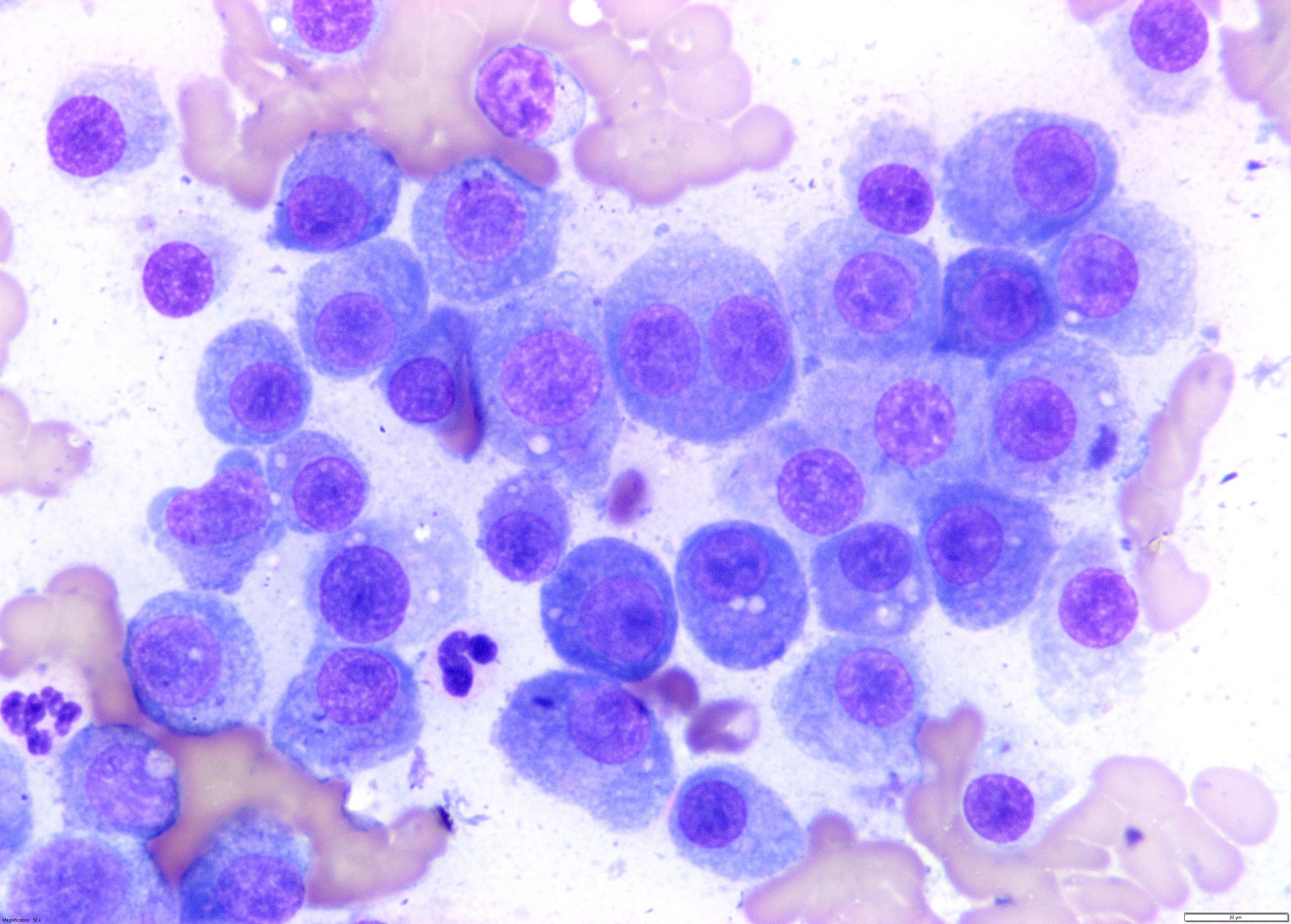Species: Any
Specimen: Nasal cytobrush, aspirated material
Container: Glass slides, slide container, swab for culture
Collection protocol: Sample as deep as possible by twirling the cytobrush in the cavity. Touch the cytobrush on a glass slide and gently roll it across the slide. If there is a nasal mass, fine needle aspiration is recommended (see “solid mass aspirates”).
Special handling/shipping requirements: Do not ship with formalin (or wrap and bag separately) as the formalin fumes prevent cellular uptake of differential stains rendering the slides non-diagnostic.
General information about the disease: N/A
General information about when this test is indicated: Because primary bacterial rhinitis is uncommon, cytology from nasal exudates, flushes and swabs often reveals septic purulent inflammation but that is usually secondary to an underlying disease (allergy, fungal infection, foreign body, viral infection, tumour, etc.). A cytobrush, or squash smear from a biopsy from the nasal cavity, especially if any white plaques are observed, can reveal fungal hyphae (e.g., Aspergillus sp.), inflammatory or neoplastic cells.
Comparison with other related tests: Chronic nasal discharge/epistaxis cases can be a bit of a diagnostic challenge. A definitive diagnosis may require a combination of imaging, cytology, rhinoscopy, histopathology, and culture.

